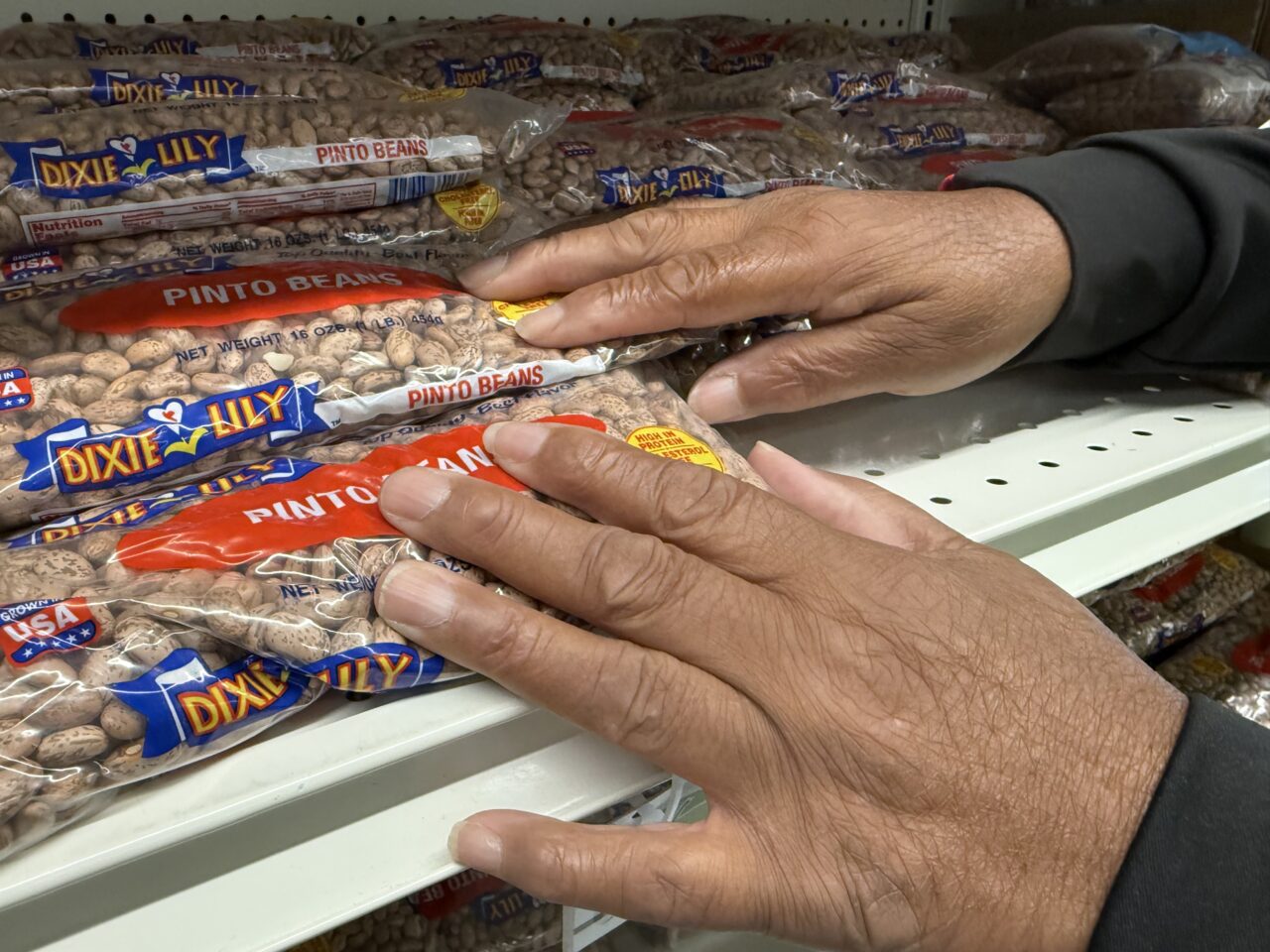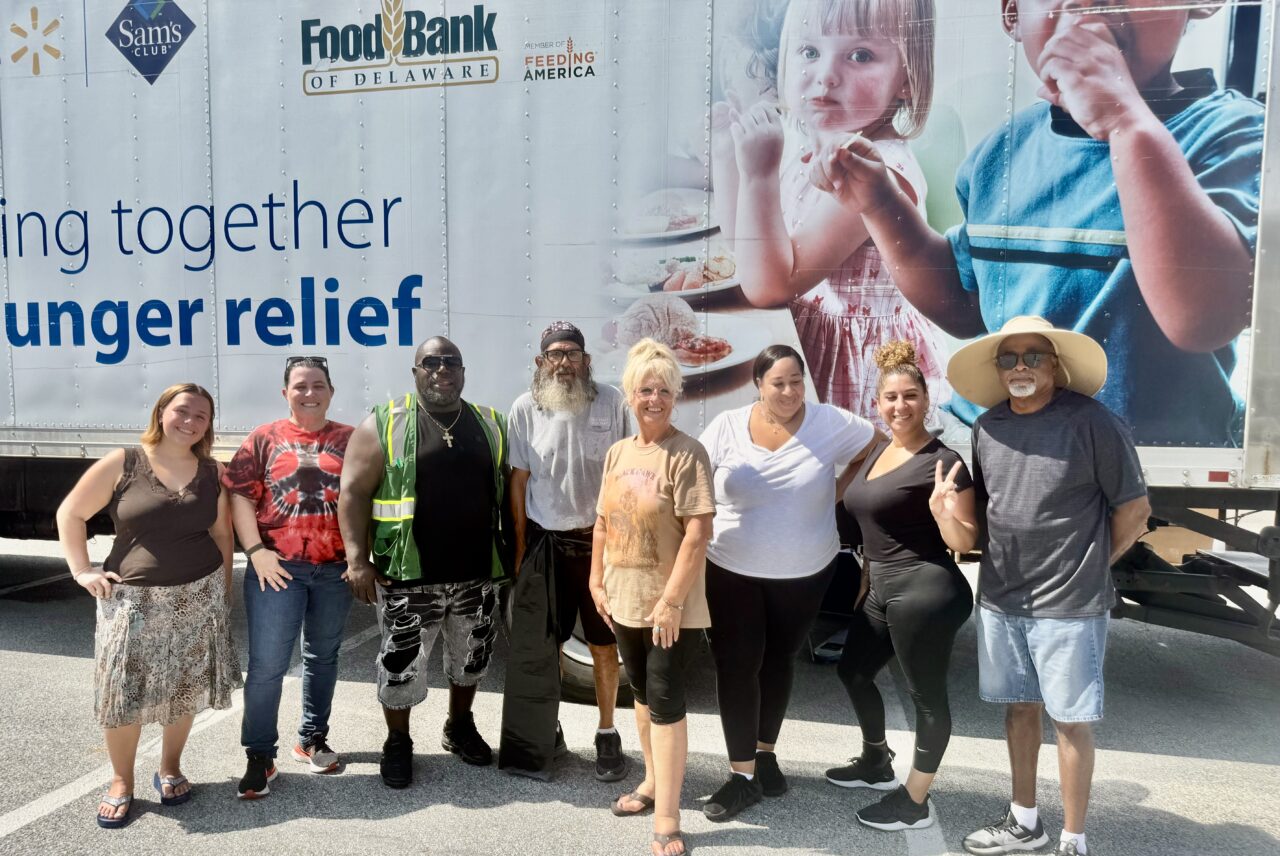When the Safety Net Fails: Stories from the Government Shutdown
November 19, 2025
When the federal government shutdown went into effect in early October we began to prepare for potential increases in demand. Federal employees were uncertain about getting paid, and on November 1, 60,000 Delaware SNAP (food stamps) recipient households lost access to essential benefits. This was the first time in modern history where SNAP benefits were not available to low-income Americans. Fortunately, Delaware Governor Matt Meyer issued a state of emergency making state funding available through First State Food Funds to help fill the void until SNAP was reinstated.
Despite the added assistance from the state, visits to our Healthy Pantry Centers in Milford and Newark doubled when SNAP benefits were halted. The waiting area in Milford extended to a line of a dozen folding chairs set up in the hallway to the lobby; some days they were filled. Overflow parking was set up at the Newark pantry to help accommodate the demand. Partner food pantries also reported seeing increased need.
Lines were long at mobile pantries throughout the state. More than 500 National Guard members who didn’t receive paychecks during the shutdown lined up at three mobile pantries sponsored by Chesapeake Utilities and Delaware Solid Waste Authority to receive assistance. Many said they had never needed to reach out for help before.
A Quiet Wait — and Quiet Worry
In the waiting rooms of our Healthy Pantry Centers, people keep their eyes low: a stare out the window, hands folded in their lap, a focus on anything but each other. Yet their ears stay alert, listening for their name to be called —the signal that it’s finally their turn to “shop.” Until they walk the aisles with a volunteer, they don’t know what food will be available to help get them, and their families, through the week.
Although the government reopened and SNAP benefits were restored, families faced so much uncertainty. Nearly a week after the Nov. 12 shutdown ended, a Harrington retiree said she’s received something from the state, but not the federal benefits of $24 each month. Typically, that was distributed on the 20th of each month.
A Milford retiree from Dentsply Caulk reported the same scenario, except her SNAP benefits usually show up on the 7th of the month. How did she fare during the shutdown? She sighs. “I did all right, visited food pantries. I’m doing the best I can.”
People who need food often drive 30 minutes or more to get help. One mother from Harrington arrived at our Milford facility with her 2-year-old daughter. She and her husband—who works full-time and attends college—are raising six children.
“SNAP makes it so we can stretch food out for the month,” she explained. “We have nothing, and I don’t expect anything.”
The only food left at home was milk and eggs from WIC.
Her story isn’t unique. Most of the neighbors we spoke with said they came because there was simply no food left.
During the shutdown, we saw families with infants and toddlers, working adults, seniors, and veterans. Many are employed, but wages fall far short of the rising cost of living. They might work in healthcare support roles, be single parents, or be grandparents caring for a grandchild.
Each story is different, yet many echo the same message: living costs more than they earn.
Another retiree explained she is not eligible for SNAP because she receives Social Security benefits and she works – driving a school bus. “It’s the best job I ever had,” she said. She spent 25 years managing convenience stores and waitressing. “I worked.”
Housing is one of the biggest hurdles.
• An older single-wide trailer often rents for about $1,500 a month.
• A basic one-bedroom apartment starts around $1,700.
• A room in a boarding house can run $650 or more per month.
Even in rural communities where rent may be slightly lower, reliable transportation becomes essential for work, grocery shopping, and medical care.
And then there are the other bills: child care, medication, car repairs, transportation, health insurance—costs that can push full-time workers into crisis. For some, low wages lead to credit card debt or high-interest payday loans just to make ends meet.
But There is Hope
Despite these challenges, we see resilience every day. And we see community.
“The past few months have shown us what it truly means to be a caring community,” said Cathy Kanefsky, President and CEO of the Food Bank of Delaware. “When federal support paused, Delaware didn’t. Our neighbors, partners, and state leaders came together to ensure no one was left hungry. We are profoundly grateful.”
Thank you to these companies for providing additional funding to meet the urgent needs of the community during the shutdown:
- Bank of America
- Amazon
- Wakefern (ShopRite)
- Capital One
- Delaware Solid Waste Authority
- Chesapeake Utilities
- WSFS
- M&T Bank
- Food Lion
SNAP is back as of November 18. But the ripple effects of several weeks without benefits remain. What will a reloaded EBT card mean for families still recovering from empty pantries and urgent bills? Time will tell.
What we do know is what we witnessed during the shutdown: a community willing to show up for one another—and neighbors who, despite fear and uncertainty, continue to hope for stability and dignity.











Comments are closed here.